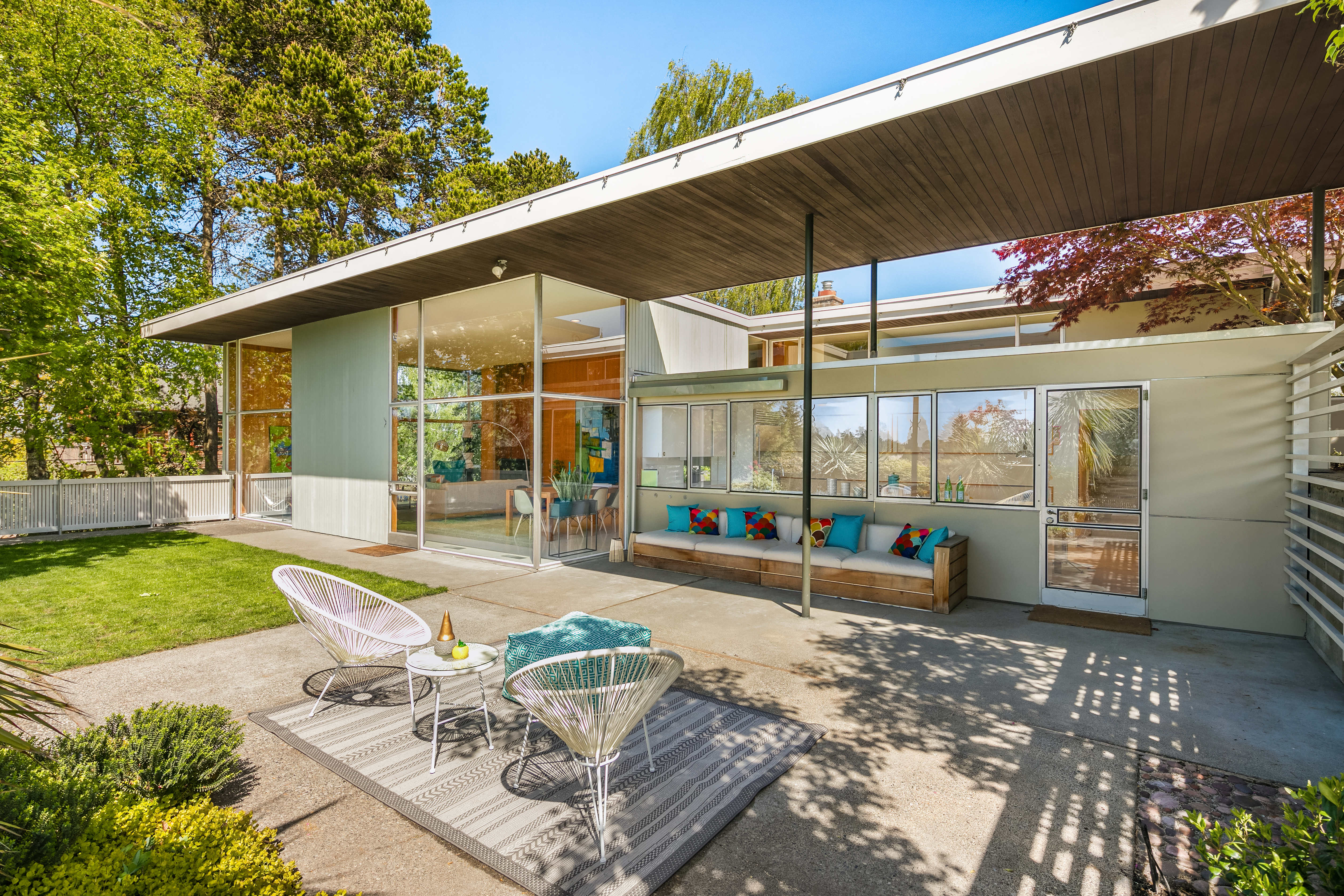A force in the Seattle architectural scene in his time, Robert Dietz was Dean of the UW School of Architecture served on the design committee for the 1962 World’s Fair, was the President of the Association of Collegiate Schools of Architecture, was appointed by President Lyndon Johnson to the National Commission on Architectural Barriers to help improve disabled access, and served on the National Architectural Accrediting Board assessing college programs nationwide. Dietz also had great success as an independent designer, earning the Seattle AIA chapter’s first honor award in 1950. His firm, Waldron & Dietz, earned six more awards from the AIA over the next seven years. In 2006, Dietz passed away at the age of 94.

His legacy goes beyond that of the impact he made on the UW School of Architecture and his other impressive accolades. He left behind buildings and homes that reflect his style, expertise, and aesthetic. Among these is a home in the Magnolia neighborhood of Seattle on 38th Avenue West. This midcentury modern home is in the unique International Style that was actually invented earlier in the 1920’s. Homes like these are prevalent throughout Southern California and the East Coast but are rare in the Pacific Northwest. That was one of the first things about the home that caught current homeowner Amy Janof’s eye over 10 years ago while scrolling through listings late one night.
As an architect herself, Janof appreciates the subtle details of the home that make it not only impressive in architecture and home design but also special to the Seattle area. From the outside, the home is rectangular and geometric, but without the typical angles you see in Pacific Northwest modern homes. It has a flat roof and tons of glass. In fact, the glass windows go from the floor to the ceiling, without framing, a difficult task in architecture. The outdoors are integrated into the architecture of the home—there isn’t that clear division of home and yard that we see in many newer neighborhoods.
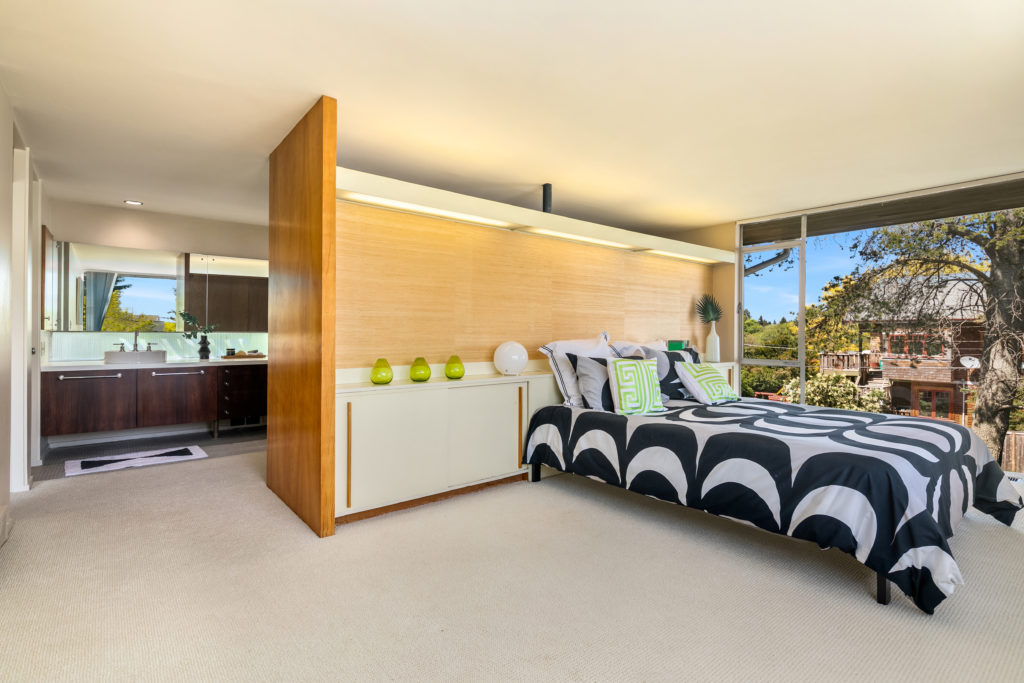
Janof and her family have lived in the home for over ten years. Throughout that time, they were deliberate in only fixing what was wearing out due to use and put in extra effort to replace parts with the original pieces that were used when the home was built. Janof was even able to find the same crank hardware for the windows that were originally used when the home was built in 1956. She is not the first. The original homeowner lived in the home for 45 years, never changing a thing. The following owner lived there for just a few years but was also careful not to disturb the integrity of the design and only repaired and restored.
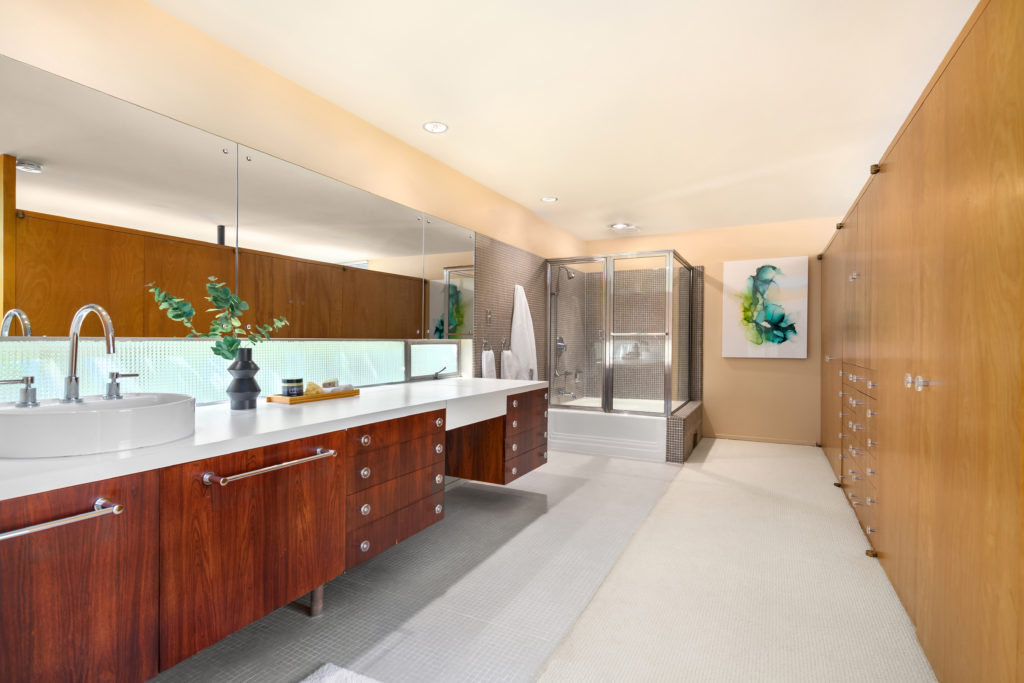
The home is unique in other ways, too. It is mostly made of steel for all the supports. It has a steep overhang with touches of industrial style in the construction. And again, those stunning floor to ceiling glass windows letting in swaths of light, even on dark Seattle winter days. The lack of trim around the windows is just one way that the home embodies minimalism and embraces the clean aesthetic of straight lines and simplicity. The design is classic, but individual in its own ways.
Living there was pure joy, according to Janof. “I would come down the stairs to the living room in the morning and think ‘oh my God, I’m living in a palace,” she said. The living room / dining room is her favorite room in the home. Featuring high ceilings and huge windows, it felt more like a luxurious ballroom that was filled with light, even on the darkest days.
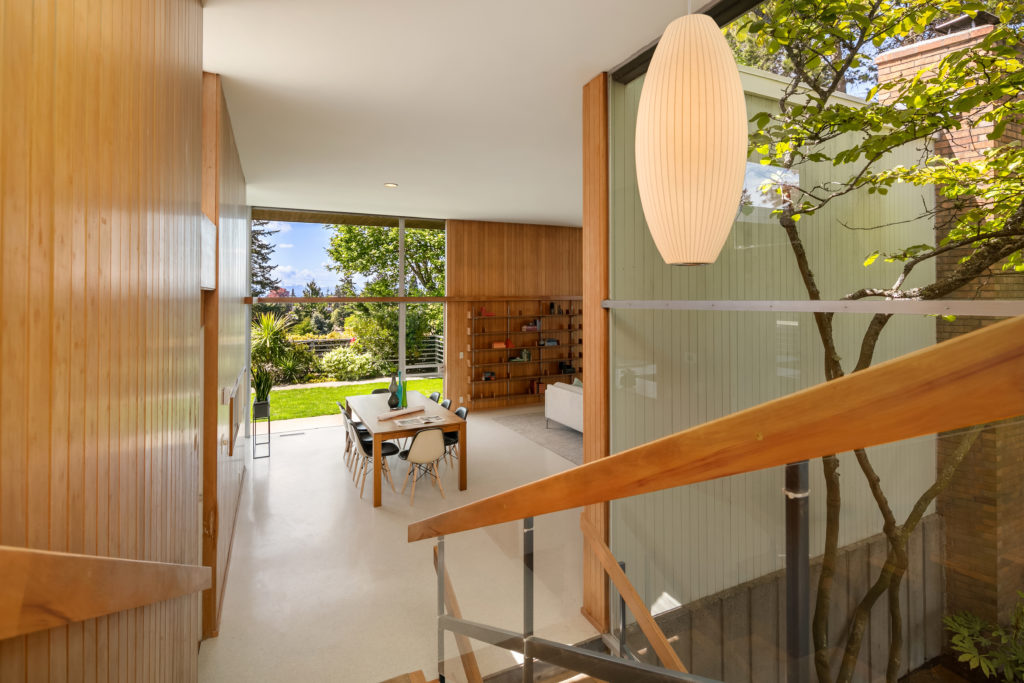
Other smaller details of the home reveal the clear expertise of its designer. This home was originally built with its future owners in mind. At the time, that was a family with four children and a mother who stayed at home, maintained the house, and watched over her children. The home is engineered in a way that optimizes this domestic lifestyle. There are small details throughout the home that make managing the family just a little easier. For example, the cabinet in the kitchen has a tea towel rack that includes a heat vent to dry the towels over night. The placement of the kitchen is along a wall of glass where the parents can watch their children play in the backyard. A common feature in a home now, this was an unusual placement for the kitchen at the time. Not to mention that these windows make the kitchen feel glamorous and a joy to cook in.
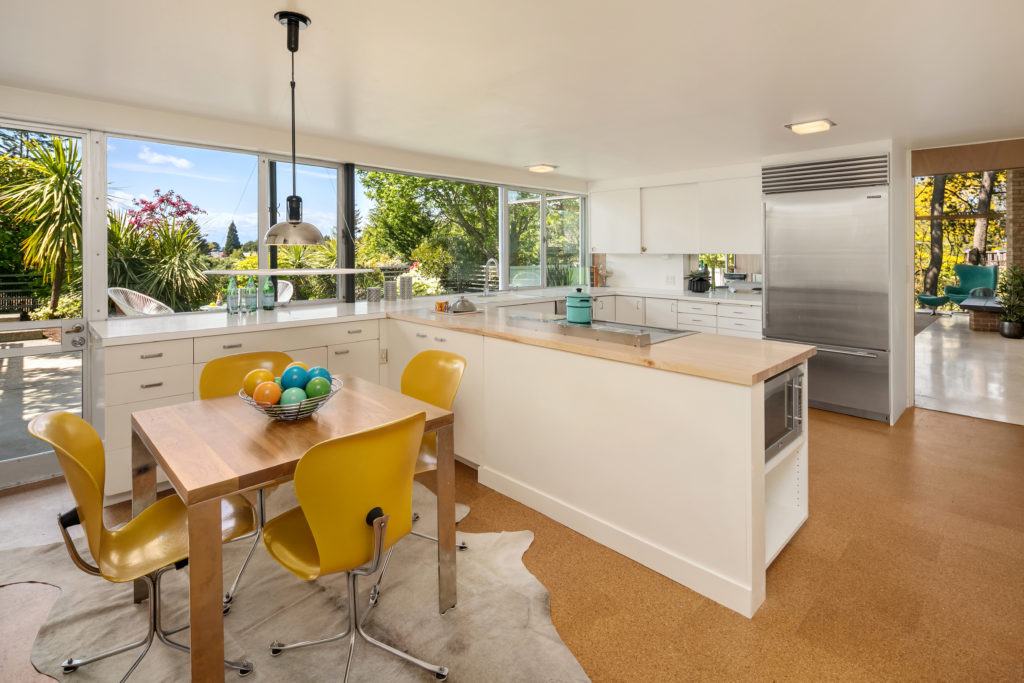
Janof recalled that watching her family grow up there was everything she wanted from a home. “It felt like a very privileged experience to be able to live in a place so beautifully put together,” Janof said. “Living in this home was such an emotional experience,” in a good way, she added. It was a beautiful place to live. Coincidentally, the school her children attended while living there was also designed by Dietz. They were surrounded day and night by thoughtful and beautiful architecture. Beyond the school, Janof greatly enjoyed living in the Magnolia neighborhood. Originally attracted to the area by the home, she grew to find the neighborhood like living in a small island community, but just minutes from downtown Seattle. Plus, with the addition of Discovery Park just around the corner, it was a perfect combination of small town and big city, without losing that connection to nature.
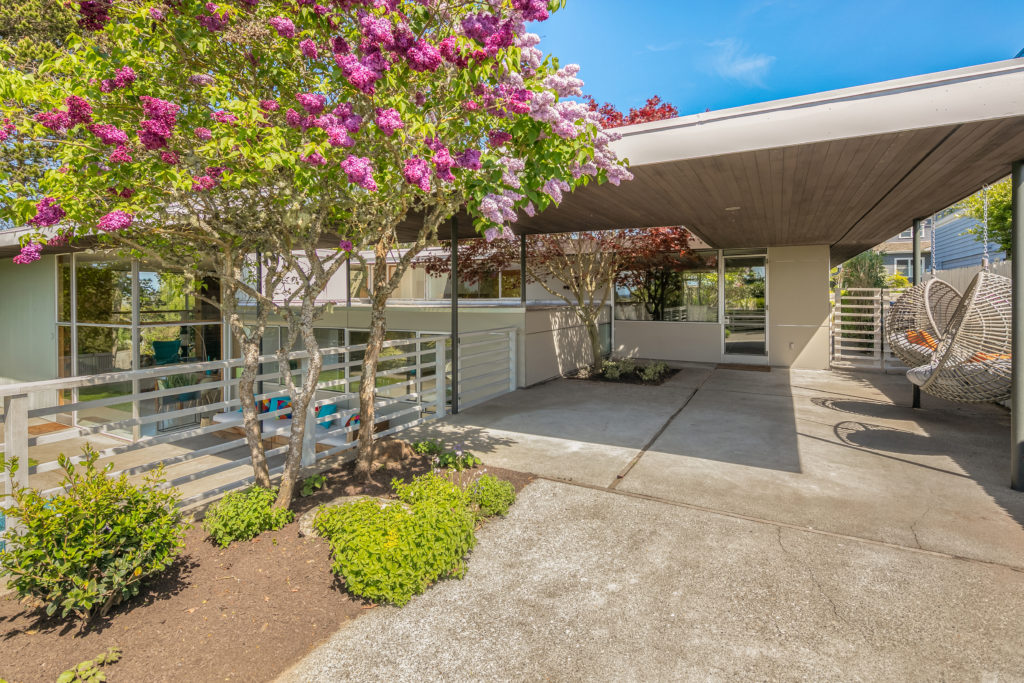
The home is now for sale for $1,888,000 (MLS # 1446852) and will have open houses hosted by Heidi Ward. We invite you to come tour the home and admire the small and big details imagined and created by famous Seattle architect Robert Dietz.
VIEW LISTING: OPEN HOUSES
3455 38th Ave W, Seattle, WA 98199
Saturday, 5/4: 2PM-4PM
Sunday, 5/5: 1PM-3PM
